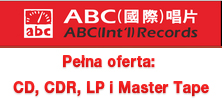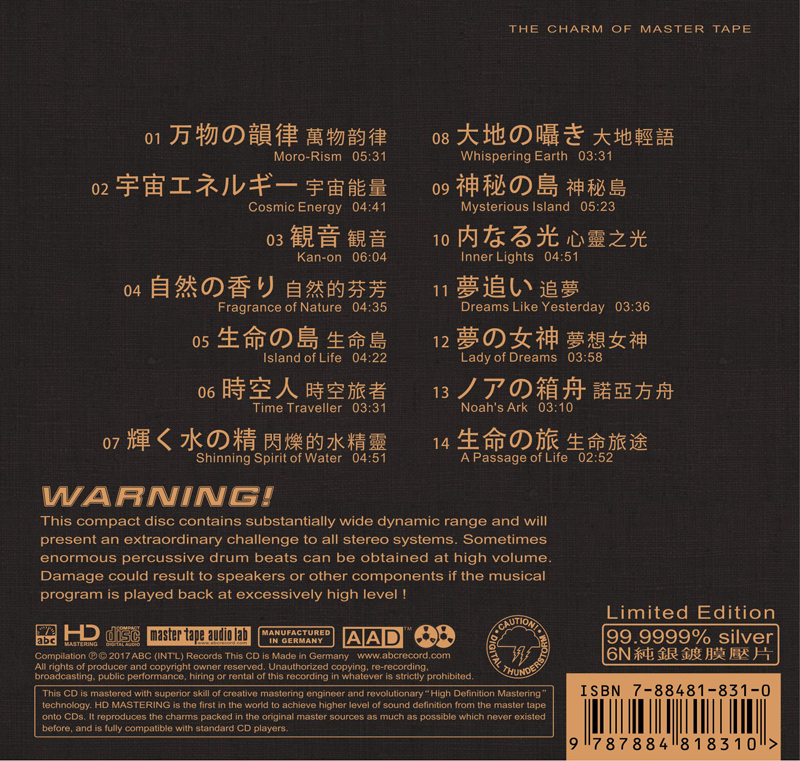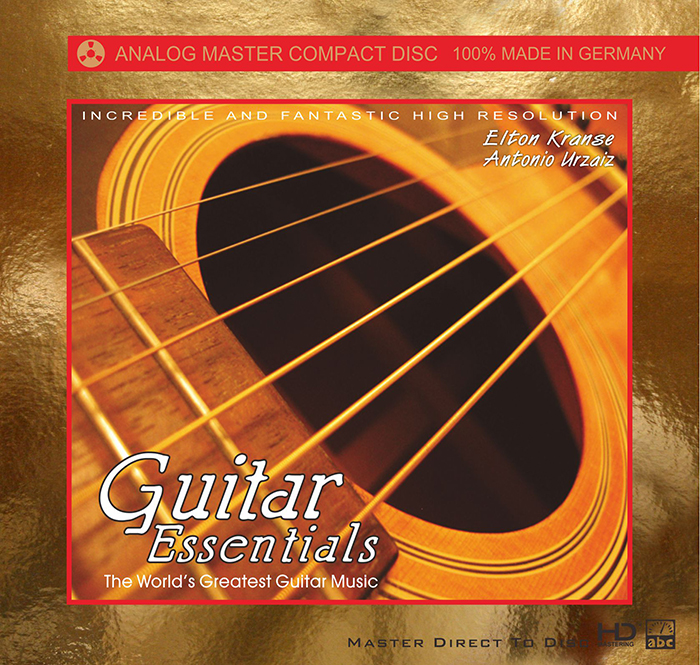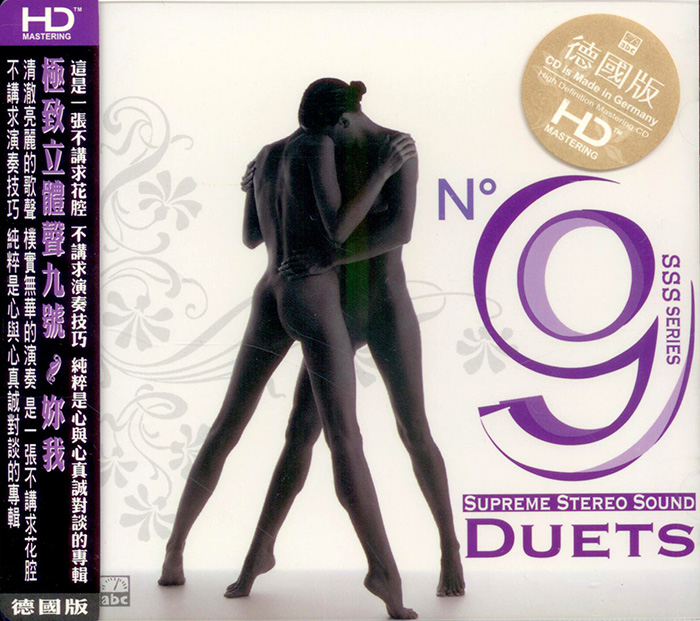Logowanie
KOLEKCJE!
BACH, CHOPIN, LISZT, MOZART, GRIEG, Dinu Lipatti, Otto Ackermann, Ernest Ansermet
The Master Pianist
PROKOFIEV, CHOPIN, TCHAIKOVSKY, SCHUMANN, BEETHOVEN, Martha Argerich, Claudio Abbado, Giuseppe Sinopoli
The Concerto Recordings
The Collection 2
Jakość LABORATORYJNA!
ORFF, Gundula Janowitz, Gerhard Stolze, Dietrich-Fischer Dieskau, Deutsche Oper Berlin, Eugen Jochum
Carmina Burana
ESOTERIC - NUMER JEDEN W ŚWIECIE AUDIOFILII I MELOMANÓW - SACD HYBR
Winylowy niezbędnik
ClearAudio
Essence MC
kumulacja zoptymalizowana: najlepsze z najważniejszych i najważniejsze z najlepszych cech przetworników Clearaudio
Direct-To-Disc
PIAZZOLLA, ChamberJam Europe
Tangos del Ángel y del Diablo
Direct-to-Disc ( D2D ) - Numbered Limited Edition
SAMPLER HD-Mastering CD, St. Louis Osuwa & The Taiko Drummer
Japanese TAIKO - extremalne wyzwanie audiofilskie SILVER CD

- SAMPLER HD-Mastering CD - sampler
- St. Louis Osuwa & The Taiko Drummer - orchestra
AAD is a Digital Copy Of
The Master Tape
Nowa, limitowana seria najbardziej audiofilskich nagrań najlepiej 'sprzedających się' wokalistek na świecie.
Każdy z utworów jest bezpośrednią kopią z taśmy matki, a więc zapisu analogowego.
Płyta, na której umieszczono nagrania została wykonana z tworzywa ciekłokrystalicznego. Natomiast warstwa nośna - to najczystsze srebro!
******
 Zapraszamy
Zapraszamy
fachowcy od dźwięku doskonałego. Co kilka miesięcy burzą nasze wyobrażenia o granicy możliwości technicznych w rejestrowaniu bezstratnym muzyki i dźwięków naszej rzeczywistości.
Dziś taką nowością doskonałą, jest technologia opracowana w firmie ABC Int’l Records. Podstawą są nośniki wyprodukowane z wykorzystaniem materiałów ciekłokrystalicznych. To w odniesieniu do krążków CD. Ale podstawą jest, była i będzie – taśma magnetyczna, najlepszy ze znanych nośników zapisu analogowego. Tylko taśma pozwala na niemal doskonałe odwzorowanie zapisanych dźwięków z wiernością porównywalną z walorami tonów źródłowych.
Nie super cyfrowa produkcja, nie doskonale tłoczony winyl – tylko taśma!
W ABC Int’l Records magnetofon STUDER A80 odczytuje zapis z taśmy. Powstaje kopia AAD. Cyfrowa kopia źródła analogowego. Ten trafia do HHB CDR-830 – profesjonalnego duplikatora płyt CD-R - AAD Digital CD. Innymi słowy – otrzymujemy dysk, z którego zazwyczaj robi się matrycę do tłoczenia milionów kopii konsumenckich CD. Tych, które obarczone są wszystkimi błędami kolejnych etapów produkcji tejże płyty. Zamiast źródlanej – woda przegotowana, w najlepszym przypadku!
Płyty AAD Digital CD 1:1 są więc cyfrowymi kopiami taśmy-matki. Wolnymi od jakichkolwiek procesów edycyjnych, poprawczych czy uszlachetniających. Dostajemy do ręki to, co artysta wykonał w studiu lub na koncercie, technik zapisał na taśmie, a obaj, po odsłuchu materiału w wozie transmisyjnym czy studiu nagraniowym orzekli: tak, to nasza muzyka, nasza realizacja, dokładnie tak graliśmy, jak nasz kolega utrwalił na taśmie.
Wreszcie CD High Damping Coating. Technologia w ogólnym ujęciu znana od ćwierćwiecza, nieustanie doskonalona, wykorzystująca materiały o idealnej przejrzystości, a więc ciekłokrystaliczne. W płytach oferowanych przez ABC – zastosowano dodatkowo powłokę tłumiącą wszelkie fizyczne i elektroniczne, niepotrzebne artefakty. Po prostu – otrzymujemy – kopię taśmy-matki na płycie CD o rewelacyjnych walorach dźwiękowych w porównaniu z krążkami bazującymi na tworzywie poliwęglanowym.
******
The Japanese taiko culture is rather booming now, beyond Japan, all over the world has the taiko performance groups. But recent years in Japan, this prosperous phenomenon has been turning into falling. For in recent years, local communities, such as the city, town and country of Japan have began to merge slowly. During Heisei era, 38 million local communities have been remained to only 18 million communities, while most of Japanese taiko group were operated among these communities, they would often hold some expositions, festival activities to support the taiko culture. So, as the merger and reduction of these communities and lack of money and performing places, the recent years Japanese folk taiko culture has been on a decline phenomenon. The most prosperous time of Japanese folk taiko culture is around the seventeenth year of Heisei(2006).
Compare to the folk taiko performances, the number of taiko concert performance is increasing. For Japanese taiko culture has become more and more emphasized on art, and no longer like the previous one, only to stay in the field of folk art. The former taiko performances cannot play based on looking the compose like pinao or violin. But now things have changed. Taiko performances have escaped from folk custom and became rather artistic. The number of tailko theatrical performance group has become larger. Some taiko music groups, even a year can earn billions of yen of performance income, and the number of an individual drummer can earn millions a month is in a large figure too. So, this is the current status of the Japanese taiko performance group. In short, folk taiko performances is more and more depressed, while professional taiko concert performance groups are increasing. From past to present, Japanese taiko culture industry almost are maintained by the citizens voluntarily. Although Japanese government had issued cultural protection law a few decades ago in order to promote the traditional culture, but in fact, the effect of government is quite limited, it is almost civil groups that try their best to save and develop the taiko culture.
It is Den Tagayasu generally believed that is the first one put the taiko performances into theater .The greatest credit of Tagayasu, that is, created the Ō-daiko ( large drum). In Japan former taiko performance, such as the Osuwa Daiko, all beated the small drum at the side. Since Tagayasu created the Ō-daiko, the performer needs to play with the whole body. Behavior of beating the drum is viewed as a sacred act in Japanese heart, Tagayasu combined spirit, fresh and drumming into one, created the taiko culture on the stage. The current taiko boom must be created to Daihachi Oguchi and Tagayasu, but as for the theater taiko, that is Ō-daiko and Tomoe Shape taiko, it is no dout that it totally belongs to Tagayasu one person’s contributions.
In 1975, when the Japanese taiko group performed in Boston U.S.A, one famous symphony orchestra conductor, Mr. Ozawa Masatoshi, saw Mr. Tagayasu these stage drumming techniques and felt very interesting, finally, he let the orchestra chord with the taiko group, also made some adjustments about the taiko group, which showed the value of taiko. They combined taiko, spirit and fresh into one. Other people saw it and also felt interesting, then they started to follow it, play it.
From the age of time, the Japanese taiko performance, until 1980s, the style of it was quite "strong", after that, the taiko performance began to become rather " aesthetic ". In other words, till 1980s, the Japanese taiko had not been influenced by the Western culture. The taiko performances show their own Japanese spirit, and they perform on the stage and face to face to the audience. The Western drum performance emphasizes the tempo of drumming, which becomes an element of the Japanese taiko. Compare to Western performance which is giving a sense of distance to the audience, the Japanese traditional performances are very close to the audience.
The most distiguished feature of taiko is, put the elements of samurai into taiko performances. Common performance groups will salute and bow before and after the performance. But they donnot do this, they perform boldly and naturly like samurai, integrate the samurai moral into taiko performance.
It will be clearly sensed that Japanese taiko performances have involved many Western music elements from our this taiko record made on the west coast of the United States, which is totally different from their former performance style. All the performers just played the Japanese-style taiko before, but now differ.






























